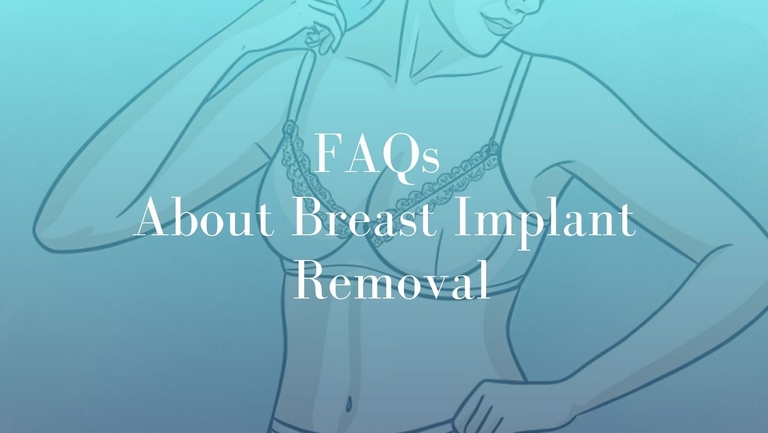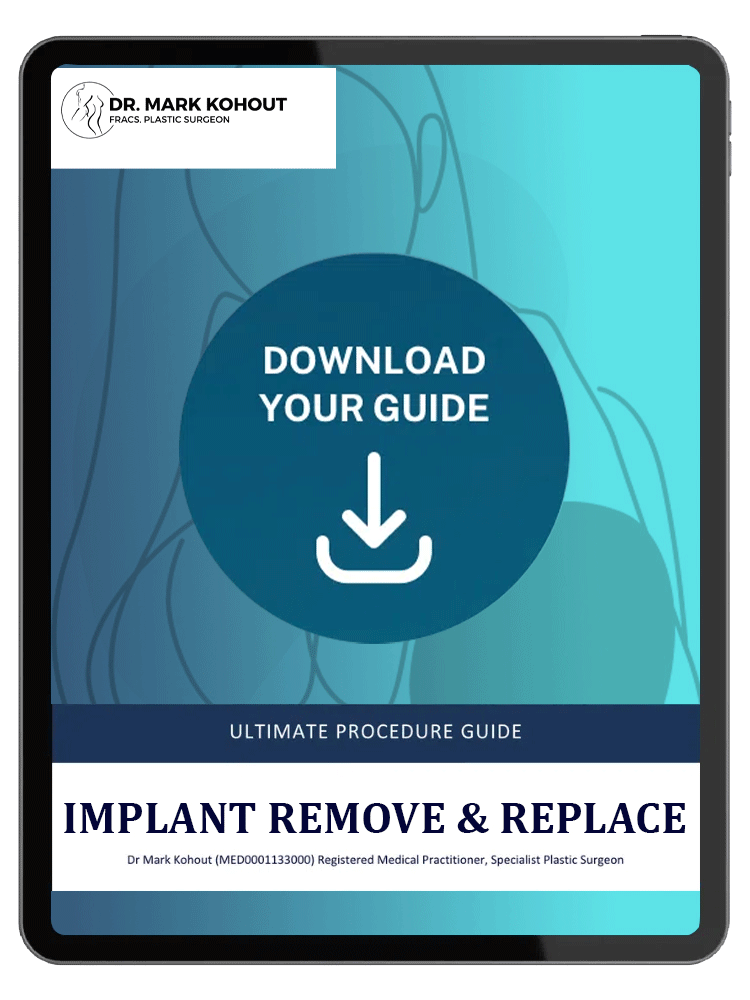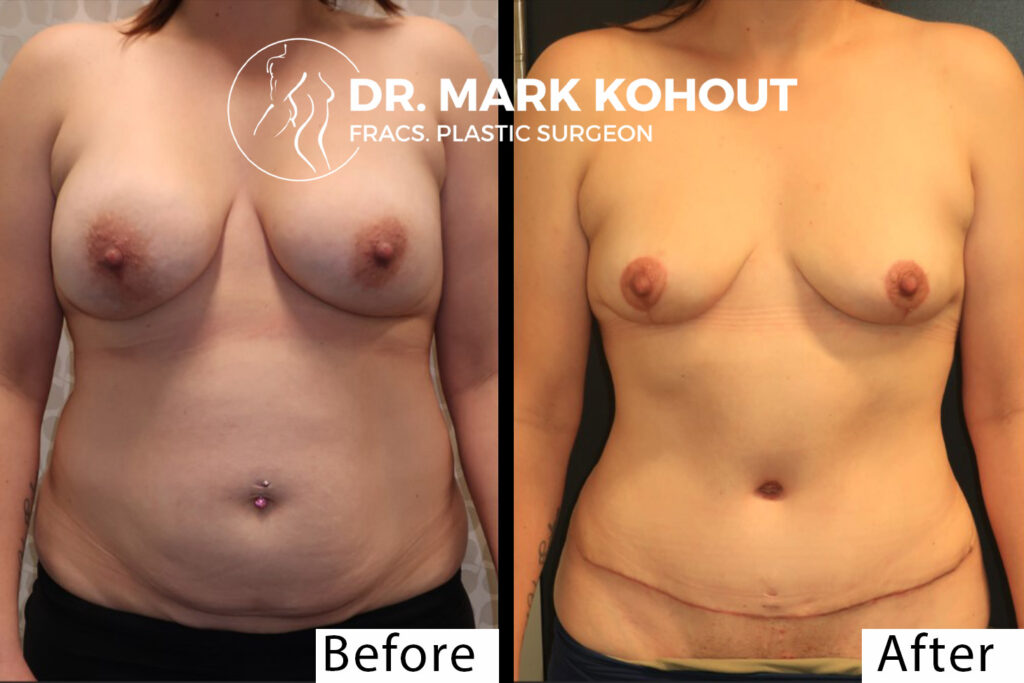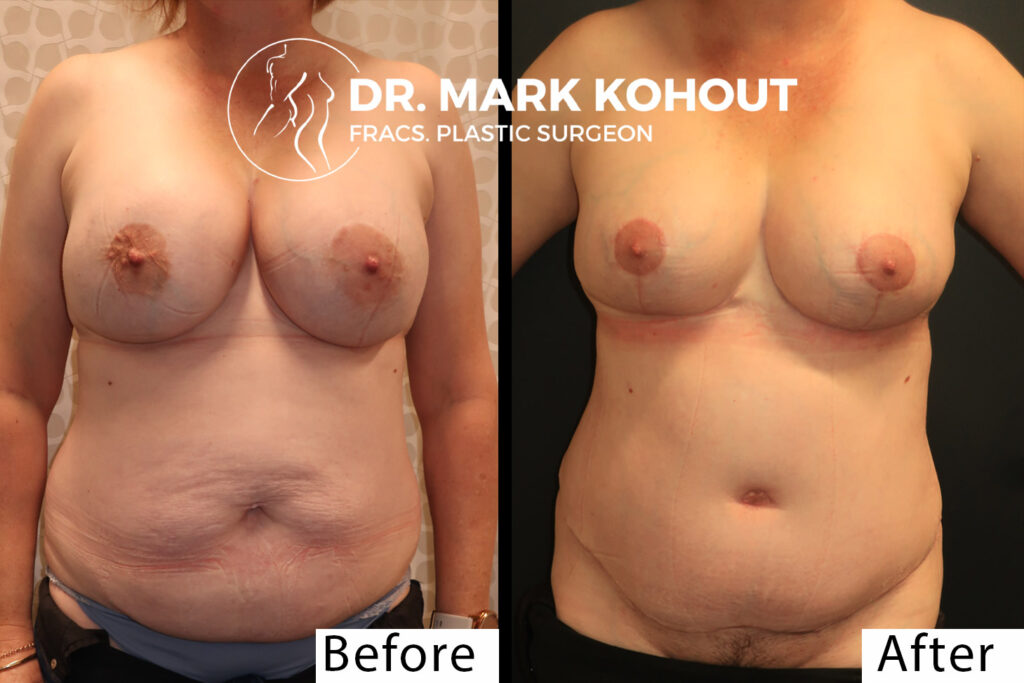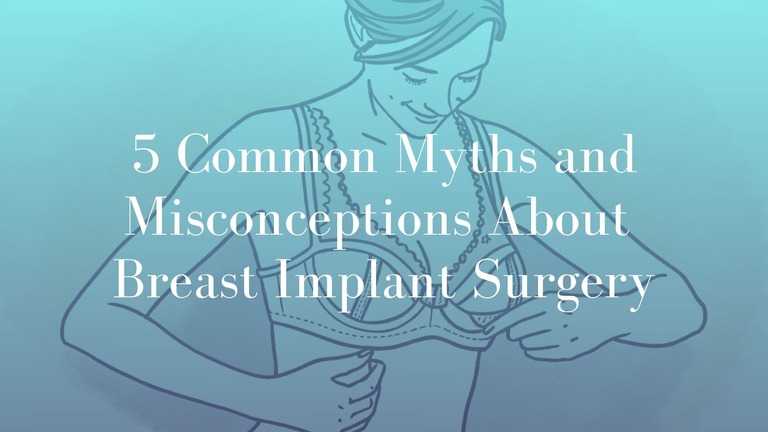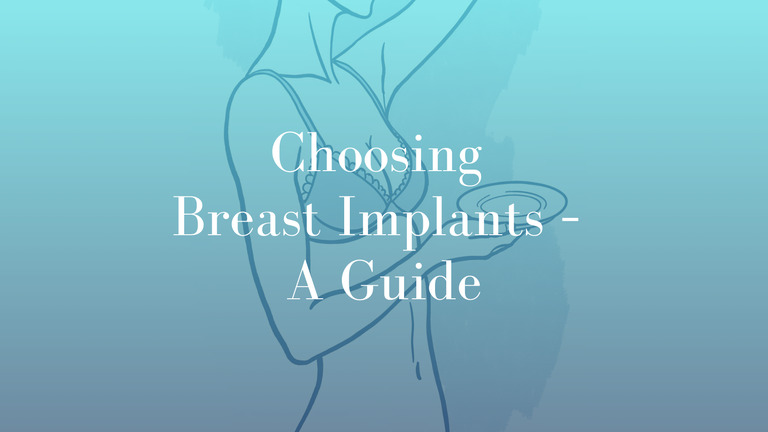Dr. Mark Kohout is a highly trained and skilled plastic surgeon specialising in a range of aesthetic procedures, including breast surgeries (augmentation, implant revision, reduction, and lifts), female genital surgeries (labioplasty and vaginoplasty), and male breast reduction (gynaecomastia). His practice is built on providing thorough consultations that empower patients with the information they need to make informed, confident decisions about their care. Recognising that each patient is unique, Dr. Kohout takes pride in addressing individual concerns and tailoring his surgical approach to achieve optimal outcomes.

With years of experience helping patients achieve their aesthetic goals, Dr. Kohout takes a personalised approach that respects the uniqueness of each person’s body and motivations. He understands that many women may feel apprehensive about undergoing breast surgery and aims to alleviate these concerns through compassionate and detailed consultations. This patient-focused approach means that individuals are not only well-informed but also feel emotionally supported throughout their surgical journey. Dr. Kohout’s dedication to surgical precision and attentive post-operative care makes him a trusted specialist in breast implant removal and other advanced aesthetic procedures.
FAQs About Breast Implant Removal – Explant Surgery
Breast implant removal, also known as explant surgery, has gained increasing relevance among patients who wish to either revise their breast augmentation or pursue a more natural aesthetic. According to the Australian Society of Plastic Surgeons (ASPS), explant surgery is often selected by individuals experiencing complications or desiring an aesthetic change more aligned with evolving personal preferences. Many women undertake this procedure to achieve a sense of congruence between their physical appearance and their personal identity, reflecting shifts in body image and lifestyle. The subsequent sections provide an in-depth exploration of common questions regarding breast implant removal, including the medical rationale, procedural specifics, potential risks, and outcomes associated with explantation.
For more information on breast implant removal, please refer to the following references:
- American Society of Plastic Surgeons (ASPS): Breast Implant Removal
- National Institutes of Health (NIH): Breast Implant Complications
Additional resources include our related blogs on Breast Augmentation FAQs, Capsulectomy Explained, and Choosing the Right Breast Procedure for You.
1. Why Do People Choose to Have Their Breast Implants Removed?
The decision to undergo breast implant removal is complex and multifaceted, often involving both medical and psychosocial considerations. The emotional component is integral to this decision-making process, as many women seek to realign their physical bodies with their internal sense of self. Some individuals may find that breast implants no longer align with their current lifestyle or aesthetic desires. Others may face medical issues such as implant rupture, capsular contracture (a fibrotic reaction around the implant), or malposition, prompting them to consider removal. The Therapeutic Goods Administration (TGA) in Australia has identified capsular contracture as one of the prevalent complications associated with breast implants. Moreover, emerging health concerns, including Breast Implant Illness (BII) and the association of implants with Breast Implant-Associated Anaplastic Large Cell Lymphoma (BIA-ALCL), are significant factors contributing to the decision to undergo explant surgery. The Australian TGA has formally recognised the association between certain textured implants and BIA-ALCL, thereby guiding informed patient decision-making.
Changes in body morphology due to ageing, weight fluctuations, or pregnancy may also alter the aesthetic satisfaction patients derive from their implants, leading to their removal. Emotional motivations, such as a shift towards embracing one’s natural form or a desire for physical comfort, are equally valid drivers of this decision. It is essential to acknowledge the deeply personal nature of this journey, which frequently involves re-evaluations of self-perception, physical aesthetics, and personal comfort.
2. What Does the Explant Surgery Involve?
Explant surgery is primarily performed under general anaesthesia, although local anaesthesia with sedation may be employed for specific cases depending on patient suitability. During the procedure, Dr. Kohout meticulously removes the implants, with a concerted focus on reducing tissue trauma and supporting optimal aesthetic and functional outcomes. Where clinically indicated, the capsule surrounding the implant—the scar tissue formed as a natural response to a foreign object—may also be removed, particularly if it is thickened or causing discomfort.
For patients concerned about post-explant breast aesthetics, a concurrent breast lift (mastopexy) may be recommended. Mastopexy serves to elevate and reshape the breast tissue, thereby addressing the post-explant contour and aiming to provide an aesthetically pleasing outcome. Combining explant surgery with a breast lift may markedly optimise the breast profile, fostering a sense of comfort for patients seeking to regain a balanced body contour. Learn more in our article on Recovery After Breast Implant Removal With A Lift (Explant & Mastopexy).
3. How Long Does It Take to Recover from Breast Implant Removal?
The recovery timeline for breast implant removal is inherently variable, depending upon factors such as the complexity of the surgical procedure and individual patient health. Typically, patients may experience mild to moderate swelling, bruising, and discomfort for the initial one to two weeks following surgery. Most individuals resume routine activities within one to two weeks; however, strenuous physical exertion, including heavy lifting, should be avoided for at least four to six weeks to facilitate optimal healing.
Dr. Kohout provides tailored aftercare instructions to support his patients throughout the recovery period. To gain insight into potential recovery outcomes, patients can view our before and after photos. Key elements of a successful recovery include sufficient rest, the use of a supportive bra, and strict adherence to post-operative instructions. In addition to physical recovery, emotional well-being is of paramount importance. The support of family, friends, or professional support groups can significantly ease the emotional burden of post-surgical adjustments. Holistic recovery involves not only physical recuperation but also emotional adaptation to a changed body, and Dr. Kohout is committed to supporting both aspects of this process.
4. Will the Breasts Look Normal After Implant Removal?
The post-operative appearance of the breasts following explant surgery is influenced by numerous factors, including the size and type of implants previously used, the duration they were in place, the quantity and quality of native breast tissue, and the inherent elasticity of the patient’s skin. Patients with smaller implants or a substantial amount of natural breast tissue may find that their breasts appear relatively similar to their pre-implant state, albeit with some degree of ptosis. For a detailed discussion on this topic, see How Will My Breasts Look After Implant Removal?
For patients with larger implants or implants that have been in place for an extended period, more pronounced changes may be evident, such as skin laxity, deflation, or asymmetry. In such cases, a concurrent breast lift can be advantageous in addressing these issues. By reshaping and lifting the breast tissue, a mastopexy may re-establish a more natural and aesthetically appealing breast contour. Dr. Kohout collaborates closely with each patient to align their expectations with achievable outcomes, meaning that the results should align with their aesthetic goals and that they feel reassured throughout their surgical journey.
5. What Are the Risks Associated with Explant Surgery?
To learn more about risk management and post-surgical expectations, please refer to our Comprehensive Guide to Surgical Risks and Aftercare.
Breast implant removal, like all surgical interventions, carries inherent risks. Common complications include infection, haemorrhage, scarring, changes in nipple sensation, and complications related to anaesthesia. Additionally, there is a risk of residual asymmetry or skin redundancy following implant removal.
Dr. Kohout adheres to best practice guidelines, as stipulated by the Australian Society of Plastic Surgeons (ASPS), to mitigate risks and foster patient safety. Throughout the consultation process, he provides patients with thorough information about potential risks and their likelihood, empowering them to make informed decisions. His approach is characterised by a commitment to both technical excellence and patient reassurance, addressing concerns comprehensively to reduce preoperative anxiety. A thorough understanding of the risks facilitates informed patient choices and sets realistic expectations for the recovery trajectory.
6. What Is Breast Implant Illness (BII)?
Breast Implant Illness (BII) is a non-standardised term encompassing a spectrum of symptoms reported by some individuals with breast implants. The Australasian College of Cosmetic Surgery and Medicine (ACCSM) advises individuals experiencing symptoms such as fatigue, musculoskeletal pain, cognitive difficulties, or autoimmune manifestations to seek evaluation by a qualified plastic surgeon. While scientific evidence on BII remains inconclusive, anecdotal reports suggest symptomatic improvement following implant removal for some patients.
For patients who perceive a correlation between their implants and systemic symptoms, explantation may offer symptomatic relief. Dr. Kohout is sensitive to the concerns related to BII and provides patient-specific guidance to help manage these health concerns. His patient-centred approach aims to balance the potential benefits of explant surgery with the complexities of BII, ensuring informed and empathetic patient care.
7. Can the Capsule Be Removed During Explant Surgery?
Capsulectomy, the removal of the fibrous capsule surrounding the breast implant, may be indicated in cases where the capsule is excessively thickened, calcified, or symptomatic. This can be done either partially or completely, depending on the condition of the capsule and the patient’s clinical presentation.
In certain instances, an en bloc capsulectomy, which involves the removal of the implant and capsule as a single unit, is favoured, particularly for patients experiencing symptoms of BII or BIA-ALCL. Dr. Kohout thoroughly discusses the indications, risks, and potential benefits of capsulectomy with each patient, allowing for an individualised approach that aligns with the patient’s health requirements and aesthetic goals.
8. Can Breast Implants Be Replaced Instead of Removed?
For patients whose primary concern is not the presence of implants per se, but issues related to implant type or positioning, implant replacement may be a viable alternative to removal. Replacement offers an opportunity to modify the size, type, or position of the implants to better suit the patient’s current preferences or anatomical considerations. For patients interested in exploring premium implant options designed for personalised results, Dr Mark Kohout on Motiva Implants: Tailored Options for Your Aesthetic Goals offers further insights into how Motiva implants can support both aesthetic aspirations and surgical safety.
Dr. Kohout works collaboratively with patients contemplating implant replacement, meaning they are well-informed about the potential options and their respective outcomes. More details can be found in our section on breast implant replacement. Whether opting for replacement or removal, Dr. Kohout’s goal is to provide comprehensive support throughout the decision-making process, aiming for patient comfort and satisfaction.
9. How Will Explant Surgery Affect Scarring?
Scarring is an inevitable consequence of any surgical procedure, and breast implant removal is no exception. The visibility and characteristics of scarring are influenced by factors such as the original incision location, individual healing responses, and adherence to post-operative care instructions. Dr. Kohout generally utilises pre-existing incisions to reduce additional scarring, thereby preserving the integrity of the surrounding tissue.
For further insights into scarring and expected outcomes, patients are encouraged to view our before and after photos. Post-operative scar management, including topical treatments, silicone sheets, and adherence to sun protection, is vital for optimising scar maturation. Dr. Kohout provides detailed scar management protocols with the aim of helping patients achieve optimal aesthetic results.
10. Is Breast Implant Removal Painful?
Breast implant removal is performed under general anaesthesia, meaning that patients do not experience pain during the surgery. Post-operatively, patients may experience discomfort, which is typically managed with prescribed analgesics. The intensity of discomfort is often reported as less severe than the initial augmentation procedure, especially in cases without complications.
Dr. Kohout prioritises effective pain management as part of his comprehensive post-operative care plan, aiming to provide comfort and facilitate a positive recovery experience. His approach includes tailored pain relief strategies that address individual needs and assist patients remain as comfortable as possible throughout their recuperation.
11. How Much Does Breast Implant Removal Cost?
The financial considerations associated with breast implant removal are influenced by various factors, including the surgical complexity, the necessity for concurrent procedures (such as capsulectomy or mastopexy), and the specific requirements of each patient. Transparent communication regarding costs is a core component of Dr. Kohout’s consultation process, meaning patients have a clear understanding of potential expenses.
Dr. Kohout is also open to discussing available financing options, recognising that financial accessibility is an important aspect for many individuals considering this procedure. This transparent approach to financial planning enables patients to make informed decisions that align with both their medical and economic needs.
12. What Can I Expect After Explant Surgery?
Post-explant recovery is characterised by an initial period of swelling, bruising, and a sensation of tightness in the chest. The timeline for recovery varies, but many patients report significant improvement within several weeks, with final results becoming more apparent as residual swelling subsides.
Adherence to Dr. Kohout’s post-operative guidelines, including wearing a supportive bra, having adequate rest, and avoiding strenuous activities, is critical for achieving optimal outcomes. Emotional support during this period is equally crucial, and having a supportive environment can markedly support the recovery experience. Dr. Kohout remains accessible to his patients throughout the recovery phase, offering guidance and addressing any concerns that may arise.
For a more detailed breakdown of what happens after the procedure, including physical changes, emotional adjustments, and healing milestones, see our article What Happens After Breast Implant Removal? (Explant).
13. How Should I Choose a Surgeon for My Explant Surgery?
Selecting the right surgeon for explant surgery is pivotal to a successful outcome. It is advisable to choose a board-certified surgeon, preferably a member of the Australian Society of Plastic Surgeons (ASPS), to guarantee adherence to rigorous professional standards. Prospective patients are encouraged to review patient testimonials and evaluate before and after images to assess the surgeon’s experience and results Remembering that results vary from patient to patient and are indicative only for that patient.
Dr. Kohout’s years of experience, patient-focused approach, and commitment to natural-looking results make him an optimal choice for those seeking breast implant removal. He fosters a transparent and supportive environment, allowing patients to feel confident in their choice of surgeon and their anticipated outcomes.
14. What Should I Ask During My Consultation?
The consultation process is a critical opportunity for patients to address any questions or concerns regarding breast implant removal. Patients are encouraged to inquire about the surgeon’s experience, surgical techniques, associated risks, and the specifics of the recovery process.
Dr. Kohout’s consultation style is rooted in open communication, meaning that all patient questions are answered comprehensively. By creating a trusting and informative environment, he empowers patients to make decisions that best align with their needs and expectations, supporting a patient-centric approach to surgical care.
15. Will My Breasts Feel Different After Implant Removal?
Following implant removal, patients may notice changes in the tactile characteristics of their breasts. Common observations include a softer, less firm texture compared to the sensation with implants. The extent of these changes is influenced by factors such as implant size, duration of implantation, and the volume of native breast tissue.
With time, the breasts will adapt, and many patients report increased comfort with their natural form. In cases where a breast lift is performed, the resulting firmness and elevation may lead to an improved aesthetic profile compared to removal alone. Dr. Kohout fosters realistic expecations for patients by educating and supporting them in their decisions about surgery.
Breast Implant Removal Surgery Before and After Images
Summary
Breast implant removal represents a highly individualised decision, influenced by a confluence of health, aesthetic, and lifestyle factors. Whether the motivating factor is related to medical complications, aesthetic changes, or a shift in personal preference, it is critical to work with an experienced and empathetic surgeon who prioritises patient well-being.
Dr. Mark Kohout offers patient-specific care, taking the time to understand each individual’s goals and formulating a tailored surgical plan. By providing clear answers to these frequently asked questions, we aim to assist those contemplating breast implant removal in making an informed choice that aligns with their personal well-being and aesthetic desires. Dr. Kohout is committed to supporting his patients throughout their journey, from initial consultation through to recovery, assisting them receive the optimal standard of care and support.
Further Reading about Breast Implant Revision Surgery with Sydney Specialist Plastic Surgeon Dr Mark Kohout
- Read more about Dr. Mark Kohout’s Breast Implants Procedure
- Read more about Dr. Mark Kohout’s Recovery after Breast Implant Removal? Blog
- Read more about Dr. Mark Kohout’s Recovery After Breast Implant Removal: What to Expect and How to Navigate the Process Blog
- Read more about Dr. Mark Kohout’s Breast Implants Revisions: Assessing the Need for Surgery Blog
- Read more about Dr. Mark Kohout’s How Much Does It Cost To Get Breast Implants Removed? Blog
- Read more about Dr. Mark Kohout’s Correcting The Waterfall Deformity with Breast Revision Surgery Blog
Here are the links for the medical references mentioned:
Related Blog Posts
Breast Implant Myths and Misconceptions
Breast augmentation is one of the most popular cosmetic surgeries in Sydney. Doing your Research is crucial before making a significant surgical decision. This article covers five popular misconceptions about this…
Choosing Breast Implants – A Guide
One of the most requested cosmetic procedures is breast implant surgery. Many women undergo this operation to reshape their bodies and achieve their desired appearance. Breast augmentation allows individuals to alter…
Breast Implants Revisions: Assessing the Need…
The demand for breast augmentation surgery has seen a consistent upward trend. While a majority of women express satisfaction with the results of their breast implants, some still find themselves unhappy…


